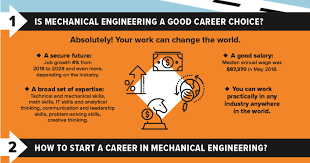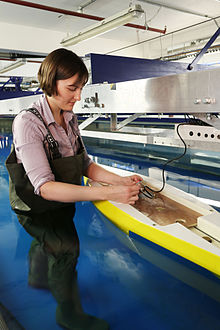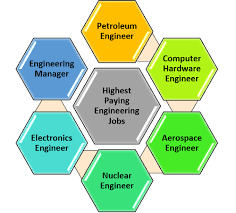
Many people have considered careers in broadcasting and sound engineering, but what exactly do these professionals do for a living? Broadcast technicians are responsible for creating movies, music, and plays using electrical equipment. They may also work in schools or hospitals, setting up sound systems. Broadcast and sound engineers might also be part or the production team. However, their primary duties are almost the same. Below are just a few of their duties. For more information about this career, please read on.
Broadcast and sound engineering technicians require excellent communication skills. Recording is done mainly on computers. However, it is important to have strong mechanical and electrical skills in order to operate audio/video equipment. Broadcast engineers also need to be computer literate. The job will require college-level coursework. You could even opt to work at a college-level radio station. Broadcast and sound engineer technicians typically complete a year-long technical program.

Broadcasters mix live sound, plan broadcast signals, and ensure broadcasts reach their intended audience. The senior broadcast engineer might have responsibility for large equipment or work with a station's management team. Broadcast technicians with a background in engineering and leadership positions may be eligible to work as chief broadcast engineers. A bachelor's degree with sound engineering is recommended to be considered for this job. A broadcast engineer who is successful can make a good living and enjoy a great work environment.
Operators of radio transmitters and video recording equipment require sound engineers and broadcast technicians. They use radio and telephone equipment for transmitting and receiving broadcasts. Broadcasting news and other programs will require the use electronics equipment. This is why sound engineers earn such high salaries. These jobs can be lucrative, but not all. Consider what you want to do and where it will take you. A career in broadcasting and sound engineering could be a great fit for you.
Broadcast technicians must have an associate's in broadcast technology. Some jobs, however, require a bachelors. Broadcast and sound engineer technicians must have an associate's degree. Broadcast technicians should also consider earning a post-secondary certification as it shows employers that they're keeping up with new technologies and standards. O*NET OnLine's recent survey found that 25 percent of broadcast technician had completed post-secondary education. A little over 35% had a bachelors degree.

Broadcast and sound engineers work full-time, but may also work overtime under certain circumstances. However, they can also work irregularly, such as during productions or live events. Some radio and television stations are available twenty-four hour a day, seven day a week. As a result, some broadcast technicians must be on call for live events and other events. Technicians working on motion pictures might have limited hours and must work within strict deadlines.
FAQ
Engineering is difficult to learn?
It depends what you mean with "hard". If you mean difficult, then it's true. But, if boring is what you are referring to, then it's false. Engineering is not difficult, but it does require a lot maths and physics.
If you want to learn how to do something, go for it! It doesn't take an engineer to become an Engineer.
Engineering can be fun as long you do something you enjoy.
It could be said that engineering is simple if you know all the details. This is not true.
People think engineers are boring because they haven't tried any other thing yet.
They just keep doing the same old thing every day.
There are many methods to solve problems. Each solution has its benefits and drawbacks. They all have their advantages and disadvantages, so try them all and decide which one you like best.
Is engineering a rewarding career?
Engineering is an exciting career where you can learn new things and keep improving your skills. The opportunity to make a difference in the lives of others is yours. There are many ways to do it.
You might design products like cars, planes or trains, and computers, or mobile phones. These devices could also be built or software developed by you. You might also be interested in creating medical equipment and machinery. There are many possibilities.
In addition to all this, engineers also enjoy working with other people, helping others solve problems, and coming up with solutions. They are always looking for new challenges and opportunities to learn.
Engineering is a great career choice. But it requires hard work and dedication. It's not just sitting around watching TV all day. To get the desired results you'll have to put in a lot. But the rewards are well-worth it.
Engineering What?
Engineering is simply the application of scientific principles in order to create useful things. Engineers use science and mathematics to create and construct machines, buildings, bridges or aircraft, and also robots, tools and structures.
Engineers could be involved in research and design, production, maintenance or testing, quality control and sales, marketing, management and teaching.
An engineer has various responsibilities, including designing and building products, systems, processes, and services; managing projects; performing tests and inspections; analyzing data; creating models; writing specifications; developing standards; training employees, supervising workers, and making decisions.
Engineers can specialize in certain fields, such as mechanical, electrical, chemical, civil, architectural, computer, biomedical, manufacturing, construction, aerospace, automotive, nuclear, petroleum, mining, forestry, geology, oceanography, environmental, and more.
Engineers may choose to concentrate on specific areas of engineering such as aeronautics or biotechnology.
What do civil engineers do for a living?
Civil engineering involves the design and construction large-scale structures like roads, bridges and buildings. It covers all aspects related to structural engineering such as building materials, foundations geotechnics hydraulics soils, safety analysis, environmental impact assessment and traffic management. Civil engineers ensure that the project meets all its objectives and is cost-effective as well as environmentally friendly. They must make sure that the structure lasts.
They can also plan and execute public works programs. They might supervise the construction and planning of roads, bridges, or tunnels.
Statistics
- 2021 median salary:$95,300 Typical required education: Bachelor's degree in mechanical engineering Job growth outlook through 2030: 7% Mechanical engineers design, build and develop mechanical and thermal sensing devices, such as engines, tools, and machines. (snhu.edu)
- Typically required education: Bachelor's degree in aeronautical engineering Job growth outlook through 2030: 8% Aerospace engineers specialize in designing spacecraft, aircraft, satellites, and missiles. (snhu.edu)
External Links
How To
How to read engineering diagrams
Engineering drawings provide a visual description of an object. Many elements are included in engineering drawings, including dimensions, symbols, and text. Engineering drawings are a common feature since ancient times. In Egypt, 3000 BC was the first time a drawing was recorded. These drawings are used by engineers to create objects such as bridges, buildings, and machines.
Engineers use engineering drawings to describe what something looks and feels like. This makes it easy for others to understand your message. Engineers use numbers and symbols to represent measurements. This makes it simpler for people who don’t understand engineering.
There are two main types, 2D (or 3D) of engineering drawings.
2D drawings are flat representations for three-dimensional objects. These include plans, sections, elevation views, and axonometric projections.
3D drawings show real-life objects from multiple angles. They are typically created using computer software. SketchUp can be used to create a model of a bridge. After selecting "View", you would choose "TopView". After that, you will rotate your view to see everything from above.
2D drawings can be seen in a holistic way. Do not focus on one aspect. It is important to pay attention to everything in the top-right corner.